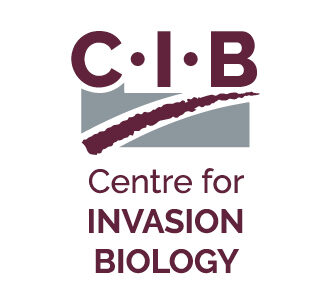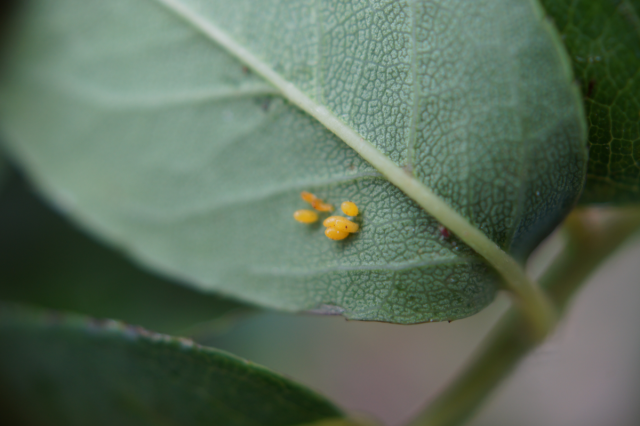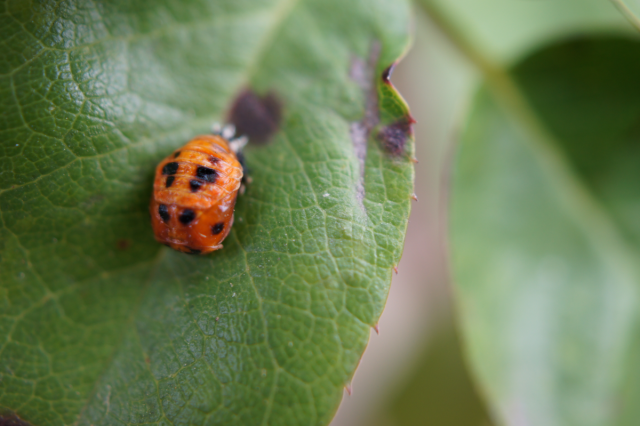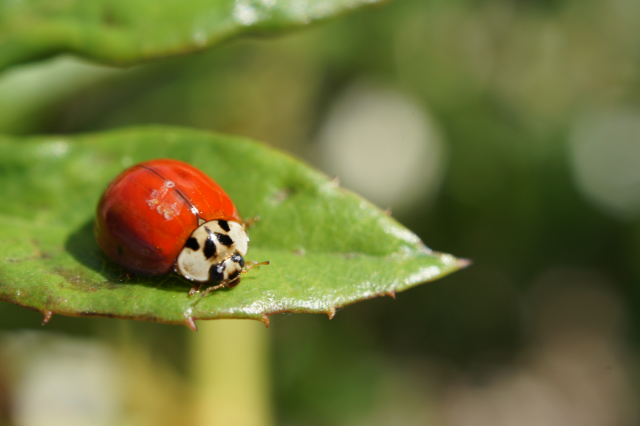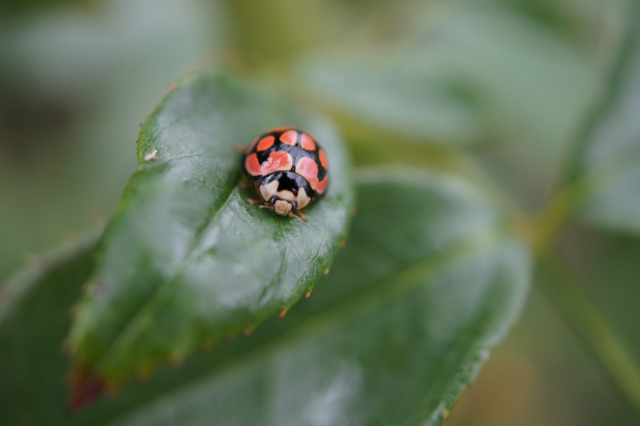Species details
Species name: Harmonia axyridis
Family name: Coccinellidae
Common name: Harlequin ladybird | Asian ladybeetle | Multicoloured Asian ladybeetle
Origin: Asia
Where in SA: All nine provinces
Where in world: All continents, accept Australia and Antarctica
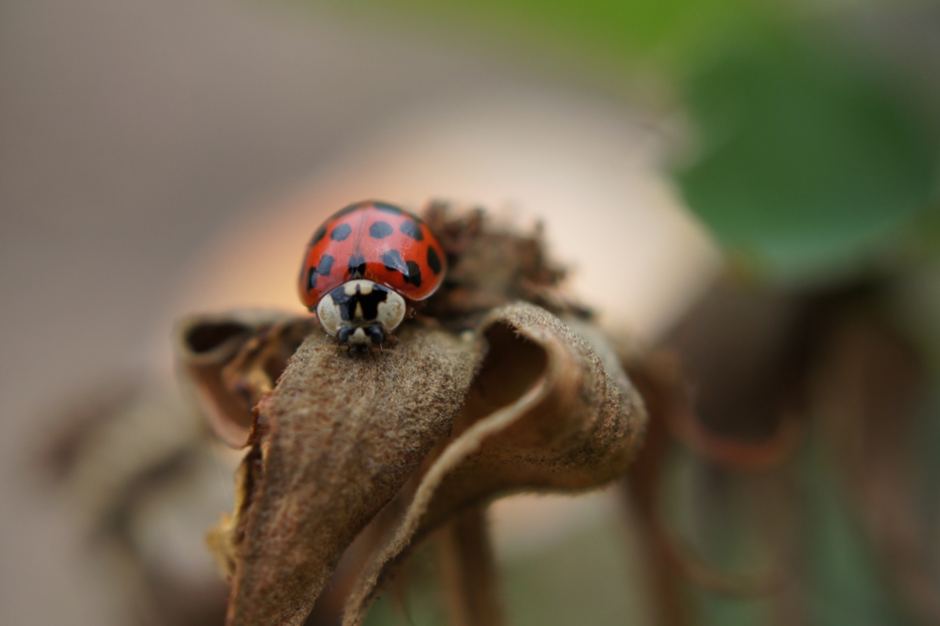
The harlequin ladybird, Harmonia axyridis, is one of the world’s worst invasive insects. It can be distinguished from other ladybirds by the black ‘M’ or ‘W’ on its neck. The number of black spots on its body can vary from 0 to 20, and it can range in colour from light orange to dark red. It is between 0.5 and 1 cm in size. (Photo credit: Ingrid A. Minnaar)
History/use/why/how
Introduced to Europe and North America as biological control of aphids and other agricultural pests, as well as accidental introductions to other places. First record in SA, mid 2001 in the Western Cape. Even though initially deemed highly beneficial, Harmonia axyridis is now recognized as a NEMBA category 1b invasive species in South Africa.
Impact and control
Impact/neg effect:
Threat to native ladybird species (competition and predation), household nuisance (congregating, reflex bleeding causing stains, they can bite, and cause allergic reactions), agricultural impact (grapes/wine industry – can taint the wine if accidentally processed with the harvest)
Control: Mechanically preventing them from entering buildings, hand collecting or trapping, but no effective method yet to stop their colonization.
Category: NEMBA 1b
What can you do?
Please take pictures and report on iNaturalist, especially sightings in provinces other than the Western Cape: https://www.inaturalist.org/observations?place_id=6986&taxon_id=48484
References
- Minnaar, I. A. 2017. The Harlequin Ladybird: The Bad Side of a Cute Beetle. The South African Agency for Science and Technology Advancement (SAASTA’s) Young Science Communicators competition 2016/2017 Article Category – Winner.
- Collop, A. 2019. Never Judge a Beetle by its Cover! CandideZA.
- Stalls, R., Prinsloo, G. 2007. Discovery of an alien invasive, predatory insect in South Africa: the multicoloured Asian ladybird beetle, Harmonia axyridis. South African Journal of Science, 103, n.3-4, pp.123-126, March/April 2007.
- Stalls, R. 2010. The establishment and rapid spread of an alien invasive lady beetle: Harmonia axyridis Coleoptera: Coccinellidae) in southern Africa, 2001–2009. Benefits and Risks of Exotic Biological Control Agents IOBC/wprs Bulletin Vol. 58, 2010.
- Clusella-Trullas, S., Logan, M. and Minnaar, I.A. 2015. Ladybirds: successful invaders in small packages. QUEST 11:8-10.
Further reading:
(parasitic wasp and fungus on ladybirds)
- Minnaar, I. A., Shinner, R., van Noort, S. and Clusella-Trullas, S. 2014. New records of the parasitic wasp Dinocampus coccinellae (Hymenoptera: Braconidae) and its hosts in South Africa. African Entomology 22:226–229. doi: 10.4001/003.022.0124.
- Haelewaters, D., Minnaar, I. A. & Clusella-Trullas, S. 2016. First finding of the parasitic fungus Hesperomyces virescens (Laboulbeniales) on native and invasive ladybirds (Coleoptera, Coccinellidae) in South Africa. Parasite, 23, 5, doi:10.1051/parasite/2016005.
(datasheet)
